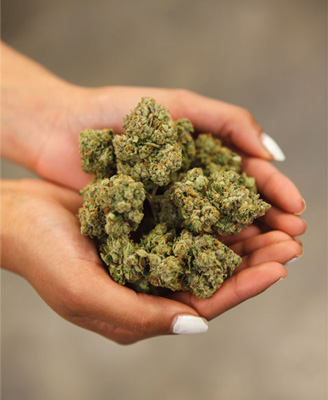2005 - 2015
Avian influenza bookends the decade concluding with the JAVMA’s centennial in 2015. When the curtain rises on 2006, a Jan. 1 News article describes the World Health Organization's growing alarm about a possible flu pandemic as migratory birds carry the lethal H5N1 avian influenza virus from Asia into the Balkans.
Fast-forward to September 2015: Avian influenza is again making headlines, but this time the story is about an outbreak of the H5N2 strain that’s resulted in the depopulation of more than 42 million chickens and nearly 8 million turkeys in the United States. It is the largest and most costly animal health emergency in U.S. history.

Veterinary medicine was center stage for several months beginning in the summer of 2006 as the nation followed the progress of Barbaro, the 3-year-old Kentucky Derby winner, when the racehorse broke a bone in his hind limb during the Preakness Stakes. Sadly, despite the heroic efforts of Dr. Dean Richardson and the veterinary team at the University of Pennsylvania’s New Bolton Center, Barbaro was euthanized after a series of complications related to laminitis.
Lt. Col. Daniel E. Holland was posthumously profiled in the July 15, 2006, JAVMA News after becoming the first Army Veterinary Corps casualty of Operation Iraqi Freedom when a bomb detonated near his Humvee in Baghdad on May 18, 2006. The Pets Evacuation and Transportation Standards Act became law that same year. A response to the animal welfare disaster wrought by Hurricane Katrina, the new law requires that state and municipality evacuation plans account for pets and service animals.
The Journal reported extensively on the melamine-contaminated pet food crisis, following the issue from the initial deaths and recalls to tighter federal regulations protecting cats and dogs.
Veterinary stakeholders continued their efforts aimed at recruiting minorities to the profession. In that spirit, the Journal’s Feb. 15, 2010, issue was dedicated to the topic of diversity in the profession. Dr. Willie M. Reed, dean of Purdue University College of Veterinary Medicine, said he remembered, in particular, an article “on diversity in the profession and the role Tuskegee played was very good on educating veterinarians about the early days in the profession and the roles of Tuskegee, Kansas State, and Cornell in providing significant opportunities for diversity when others were denying them.”
Another focus in veterinary education was reforms that would produce graduates able to meet future societal needs, most notably in the area of food production and safety. Relatedly, Congress and the profession were concerned about shortages of veterinarians working in such important areas as public health and biomedical research.
The AVMA endorsed the one-health movement goal of bringing together veterinarians and physicians to address cross-species disease transmission. Pet obesity was becoming more common, as was pet health insurance. The unwanted horse population was growing as the nation’s three horse slaughter facilities were shuttered by court order.
An April 15, 2007, JAVMA News article announced the appointment of Dr. Ron DeHaven as AVMA executive vice president following the retirement of Dr. Bruce Little, who served 11 years in the position. Dr. Janis Audin died in April 2009 after nearly a decade as editor-in-chief of the AVMA journals. Two months earlier, Dr. DeHaven had named the ailing Dr. Audin editor-in-chief emeritus. Dr. DeHaven said, “Dr. Janis Audin’s contributions to the journals, to the AVMA, and to the profession were profound, and we will be forever grateful. Between the professional journals which she lived for and the many lives she has touched and influenced, Janis Audin’s legacy will live on at AVMA.” Associate Editor Kurt Matushek was appointed AVMA editor-in-chief.

Dr. Janis Audin’s contributions to the journals, to the AVMA, and to the profession were profound, and we will be forever grateful.
AVMA CEO Ron DeHaven on the death of the AVMA editor-in-chief, pictured at left
The profession’s financial struggles came to a head during the Great Recession of 2007-2009. In an effort to limit the supply of new veterinarians, some voices within the profession demanded that the AVMA Council on Education stop accrediting new veterinary colleges, both in the United States and abroad. In the meantime, the AVMA stood up the Veterinary Economics Division to study economic problems throughout the veterinary profession and provide strategies to resolve them.
In 2008, the AVMA took a controversial stand against canine ear cropping and tail docking for nontherapeutic purposes. Four years later, the AVMA again raised the ire of some veterinary stakeholders by supporting federal legislation proposing national standards for treatment of egg-laying hens.
Between 2005 and 2015, the JAVMA published articles on the creation of veterinary specialties in animal welfare, sports medicine and rehabilitation, and shelter medicine; possible long-term health problems associated with early spay and neuter in cats and dogs; growing support for veterinary hospice; interest in marijuana’s potential as a veterinary drug; and veterinarians on the front lines fighting against the largest Ebola virus outbreak in history.